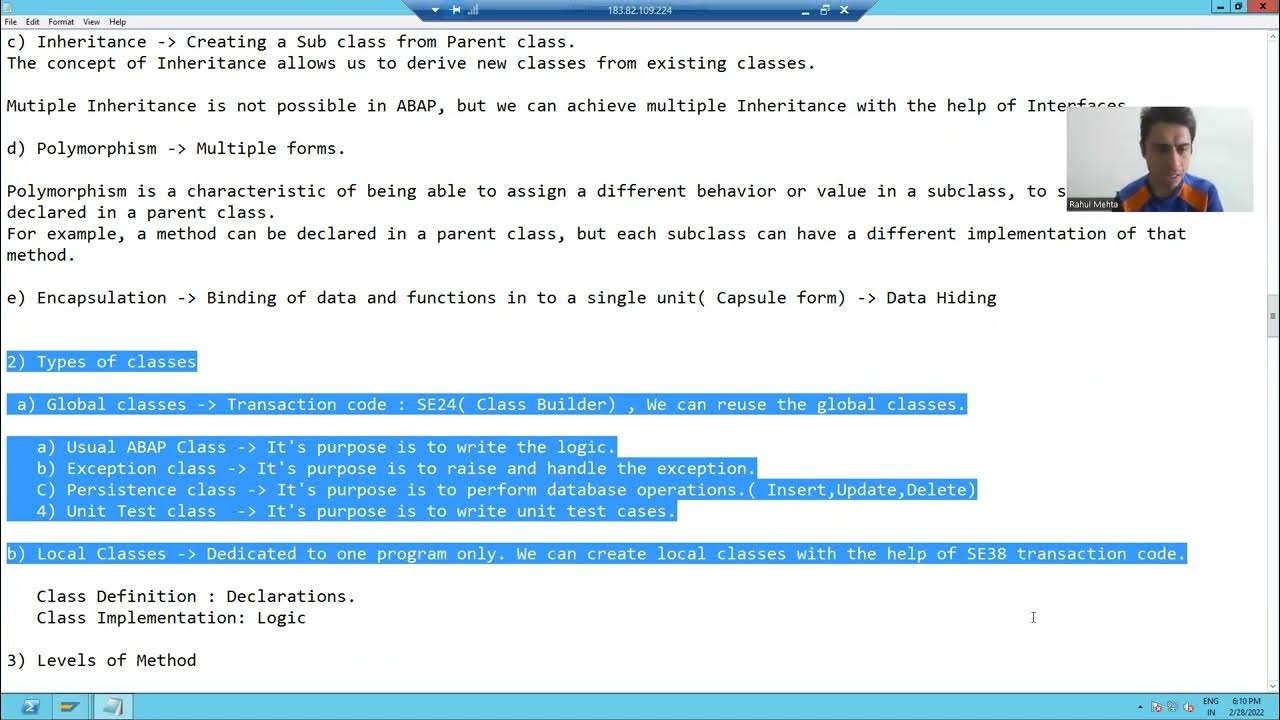COMSC 200 Week 10 Part 1
Summary
TLDRThis discussion centers on the ray class example, contrasting shallow and deep copies in object-oriented programming. It highlights the implications of shallow copying, which leads to multiple objects sharing the same memory and potential crashes upon destruction. The necessity of a deep copy is emphasized, where separate memory allocations ensure safe management of resources. Key components like the copy constructor and assignment operator are explored, showing how deep copies require more complex implementations. Overall, the session underscores the importance of proper memory management in dynamic object handling.
Takeaways
- 😀 Understanding shallow vs. deep copies is crucial in memory management, especially with dynamic allocations.
- 😀 The subscript operator has two versions for non-constant and constant objects to prevent unintended modifications.
- 😀 Shallow copies simply copy memory addresses, potentially leading to multiple objects referencing the same data.
- 😀 Copy constructors and overloaded assignment operators need special handling to avoid issues with shallow copies.
- 😀 Dynamic memory must be properly managed, with every 'new' having a corresponding 'delete' to prevent memory leaks.
- 😀 A crash occurs when multiple array objects attempt to delete the same dynamically allocated memory.
- 😀 Deep copies involve creating separate copies of dynamic memory to ensure independent object states.
- 😀 Memory addresses require multiple slots in memory (4 bytes for 32-bit addresses) due to their size.
- 😀 The destructor cleans up allocated memory to maintain program stability and prevent memory leaks.
- 😀 Operator overloading and friend functions are key techniques for managing access to private data in classes.
Q & A
What is the main focus of the discussed ray class?
-The main focus is on understanding shallow and deep copying within the ray class that manages an array of integers.
What is a shallow copy, and why can it be problematic?
-A shallow copy duplicates the pointer to an array rather than the array itself, leading to multiple objects pointing to the same memory. This can cause crashes when one object is destroyed and deallocates memory that other objects still reference.
How do shallow copies affect memory management?
-Shallow copies can lead to memory management issues, such as double deletions or accessing invalid memory, because multiple objects may attempt to free the same memory address.
What is a deep copy, and how does it differ from a shallow copy?
-A deep copy creates an entirely new copy of the array in memory for each object, ensuring that each object operates independently and modifying one does not affect the other.
Why is it important to implement a deep copy in this context?
-Implementing a deep copy is essential to maintain memory safety, preventing issues that arise from shared memory locations and ensuring that each object can be destroyed without impacting others.
What happens in the destructor of an object with a shallow copy?
-In the destructor of an object with a shallow copy, if it tries to delete the shared array, it will deallocate memory that other objects still point to, leading to potential crashes.
What should the copy constructor and assignment operator do in a deep copy implementation?
-The copy constructor and assignment operator should allocate new memory for the array and copy the actual values from the source array, rather than just copying the pointer.
What memory considerations are there when using dynamic allocation?
-When using dynamic allocation, it’s important to ensure that each object has its own separate memory space to prevent memory leaks and crashes related to shared pointers.
How does the script suggest handling memory cleanup?
-The script emphasizes that every allocation with 'new' should have a corresponding 'delete' to clean up memory properly and prevent leaks.
What was demonstrated with the application program in relation to the shallow copy?
-The application program demonstrated how shallow copies can lead to crashes when trying to destroy objects that point to the same memory, illustrating the risks involved.
Outlines

このセクションは有料ユーザー限定です。 アクセスするには、アップグレードをお願いします。
今すぐアップグレードMindmap

このセクションは有料ユーザー限定です。 アクセスするには、アップグレードをお願いします。
今すぐアップグレードKeywords

このセクションは有料ユーザー限定です。 アクセスするには、アップグレードをお願いします。
今すぐアップグレードHighlights

このセクションは有料ユーザー限定です。 アクセスするには、アップグレードをお願いします。
今すぐアップグレードTranscripts

このセクションは有料ユーザー限定です。 アクセスするには、アップグレードをお願いします。
今すぐアップグレード関連動画をさらに表示
5.0 / 5 (0 votes)






